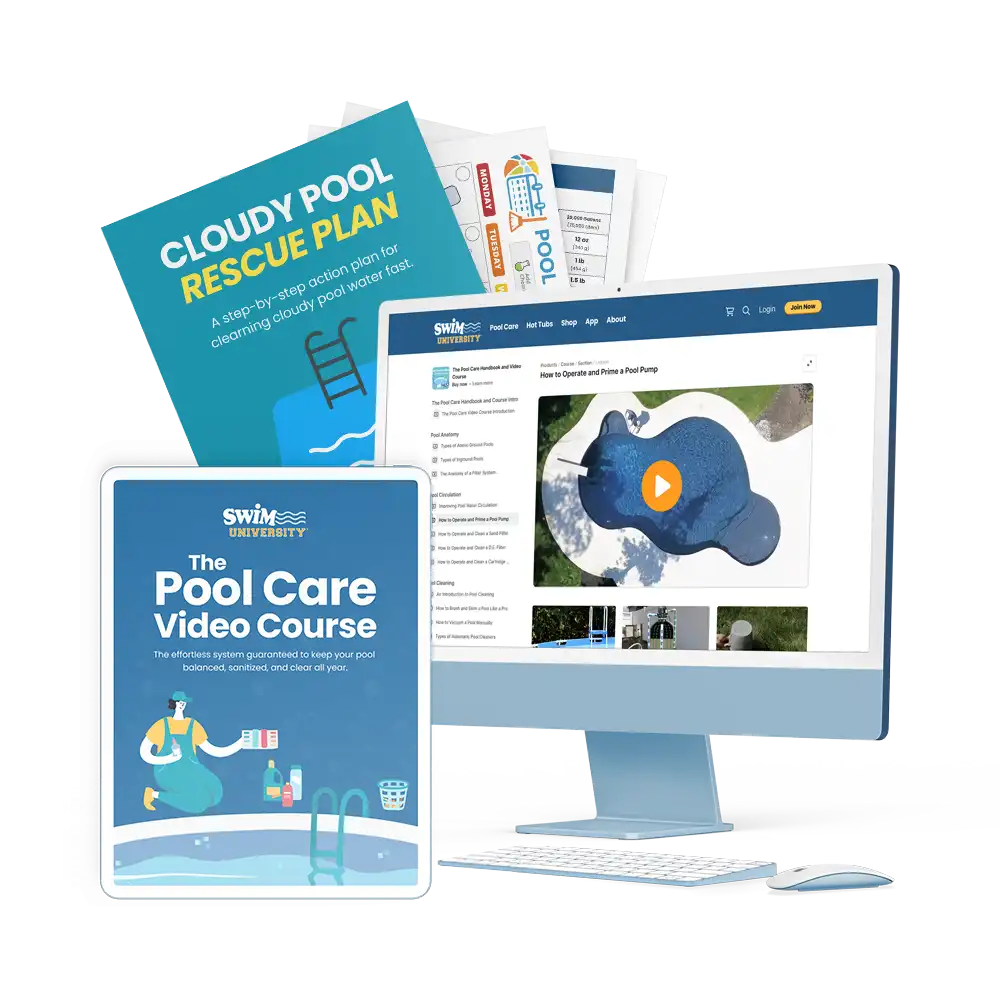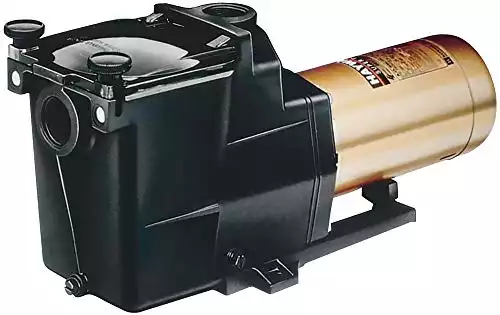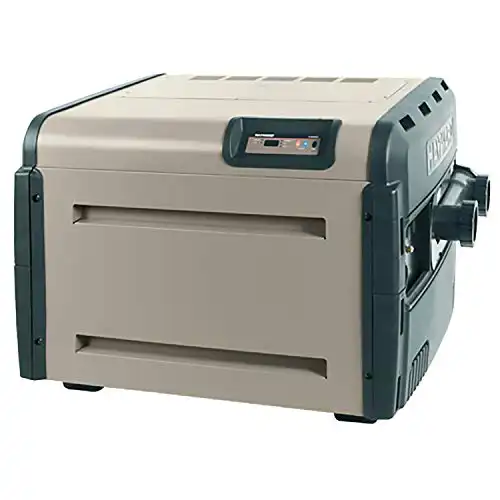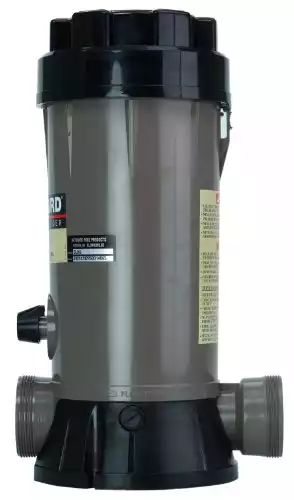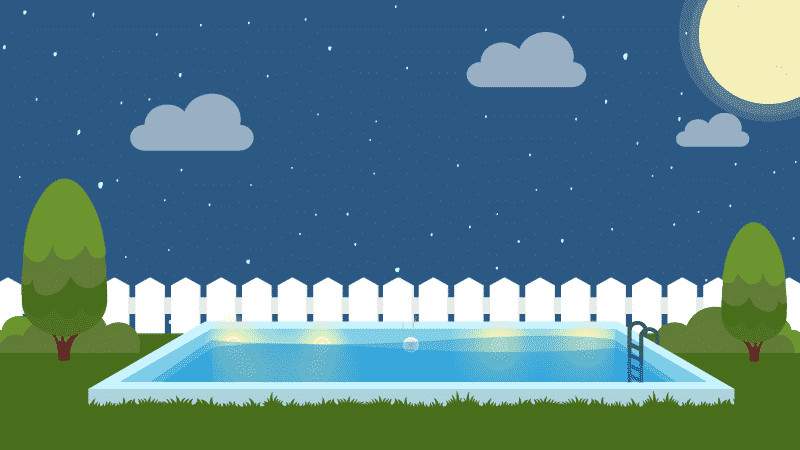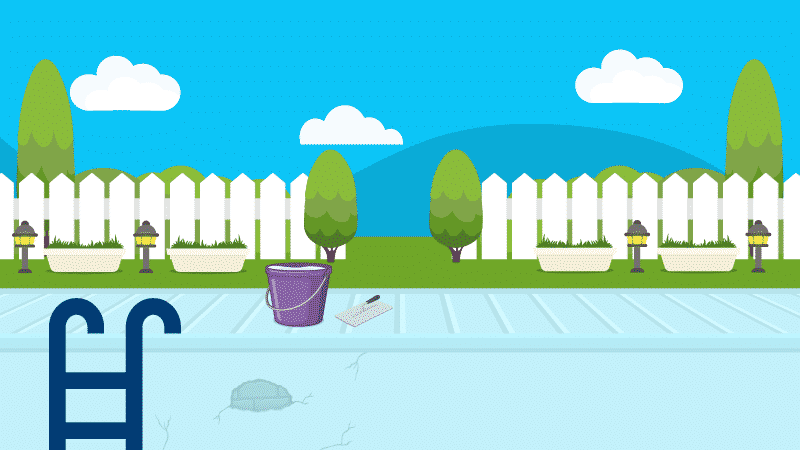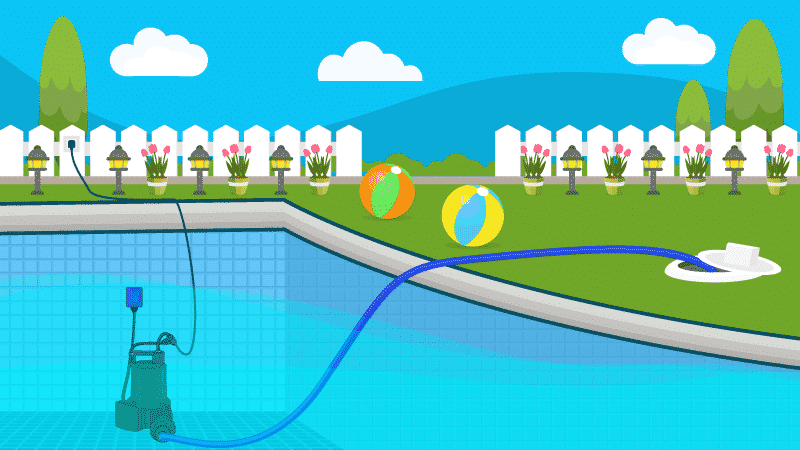Parts of a Pool: Essential Knowledge for Pool Care
Quick! Can you name the seven essential parts of a pool? The parts that, if your pool didn’t have them, would leave the water dirty, contaminated, and quickly looking like a lagoon? Well, if you can’t, that’s OK. We didn’t warn you there’d be a pop quiz today.
Surprise tests aside, one of the best things you can do for yourself and your pool is to learn about all the essential parts of a swimming pool. It’ll help you with your daily maintenance, and will come in handy for occasional troubleshooting. Not to mention, you’ll ace the next quiz.
Stop wasting time and money with confusing water chemistry and maintenance. Our effortless system guarantees to keep your pool balanced, sanitized, and crystal clear all year. Works for all pools including saltwater.
Knowing the Parts of a Pool Makes a Big Difference
It would be difficult to fully maintain your pool if you’re unfamiliar with its anatomy. Think of it this way—if you were going to maintain your own car rather than take it to a mechanic, it’s imperative to know how the engine works, what all the parts are, how they work together, and what to look for when something goes wrong.
It’s no different when you own a pool. Thankfully, though, a pool doesn’t have nearly as many moving parts as a car, so you can take care of it yourself a lot more easily. But that care still requires a foundational knowledge of all the parts of your pool.
Seven Essential Pool Parts
Aside from all the extra equipment and accessories you can buy, every pool has the same seven main parts:
- skimmer
- main drain
- suction line(s)
- pump
- filter
- return lines
- return jets
Some of them are situated on the suction side of the pool, while the others are on the pressure side. Once you know what each part of the pool does, its location will make sense.
The Suction Side
Its name says it all. This is the side of the pool that takes or sucks in water and introduces it to the filtration system, beginning the circulation process.
Skimmers
Built into the side of the pool, these are plastic buckets that house skimmer baskets. The baskets are there to catch larger debris such as leaves, twigs, bugs, and anything else that’s too large to go through your filter.
Pool water enters the skimmer and begins its journey through the pool’s filtration system.
Main Drain
Usually located in the floor of the pool’s deep end, the main drain’s name may be a little misleading. While it can be used to drain the pool, it’s seldom used that way. Normally, it performs the same function as the skimmers.
This allows for better circulation as water is pulled from the top by the skimmers, and from the bottom by the main drain.
Important: Newer inground pools usually have two main drains. This is a safety measure to reduce the suction force in case something—or someone—blocks one of the drains. Older inground pools may not have two main drains, making pool safety practices even more important.
Suction Lines
These pipes, usually made of PVC, carry the pool water from the skimmer to the pump.
The Filtration System
Serving two entirely separate but equally important purposes, the pool pump and pool filter make up the filtration system.
The Pump
Pool water doesn’t just fall into the skimmers. The pool pump contains an impeller, which spins fast enough to create a vacuum, which pulls the water into the filtration system.
The impeller is powered by a motor, so pool pumps are identified by horsepower. They usually range from ¾ to 3 horsepower. The pump size you need will depend on the size of your pool. The larger the pool, the more horsepower the pump will need to move the higher volume of water.
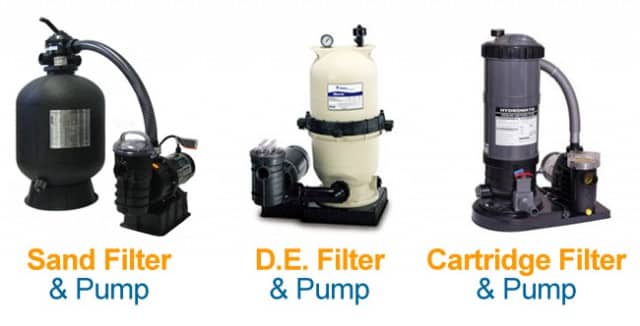
As the water passes through the pump, the force being exerted on it changes from pulling to pushing. The pump then pushes the water into the filter.
The Hayward Super Pump Single-Speed 1 HP Pool Pump sets the industry standard for efficiency and dependability and is part of the world’s best-selling medium-head pump family.
The Filter
While sanitizers like chlorine kill viruses and bacteria, that’s only half the job of cleaning the water. The filter does the rest, removing fine debris, tiny particles, and in some cases, even bacteria that may have made it past the sanitizer.
Pool filters are available in three varieties: sand, diatomaceous earth (D.E.), and cartridge. They each have their pros and cons, but all are effective and easy to maintain.
The Pressure Side
Again, the name gives it away. This side of the pool pushes water from the filtration system back into the pool, completing the circulation process.
Return Lines
The opposite of the suction lines, but also made of PVC, they carry pool water from the filter to the return jets.
Return Jets
Once the filtered water has passed through the return lines, it arrives at the return jets, where it reenters the pool.
These parts of the pool serve double duty. In addition to being portals through which water goes back into the pool, return jets also push the water around the pool. This helps to not only direct water into the skimmers, but any debris that may be floating on the water’s surface, where it can be caught in the skimmer basket.
Tip: To get that circulation in the pool, and if you have two or more return jets, angle some of them down towards the floor and in one direction, either left or right. You want to create a circular motion while helping to kick debris off the bottom with the jets angling down.
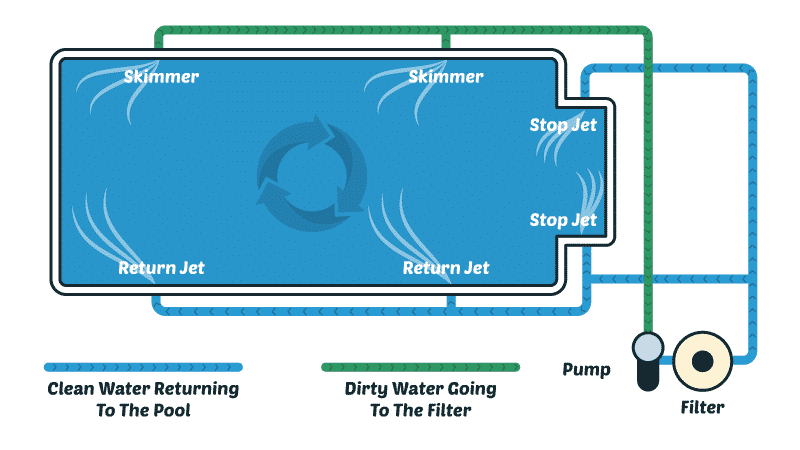
Inground Pool Anatomy
Pools vary in size, shape, and type, so there’s no one anatomy that’s going to fit every single inground pool in existence. But they all work on the same principle.
While extra equipment can be added to this basic setup, these parts make up essential inground pool anatomy. Without any one of them, you won’t have any pool circulation, which means you’ll have a really dirty pool.

Above Ground Pool Anatomy
The circulation process is exactly the same as the one for inground pools, but the setup is slightly different
For one thing, above ground pools usually only have one skimmer, and one return jet. Also, the suction and return lines are much shorter, and don’t go underground the way they do on an inground pool. This makes them a lot easier to repair or replace when necessary.
Other than that, water still goes from the pool, through the skimmer, through the pump, through the filter, and through the return jet back into the pool.
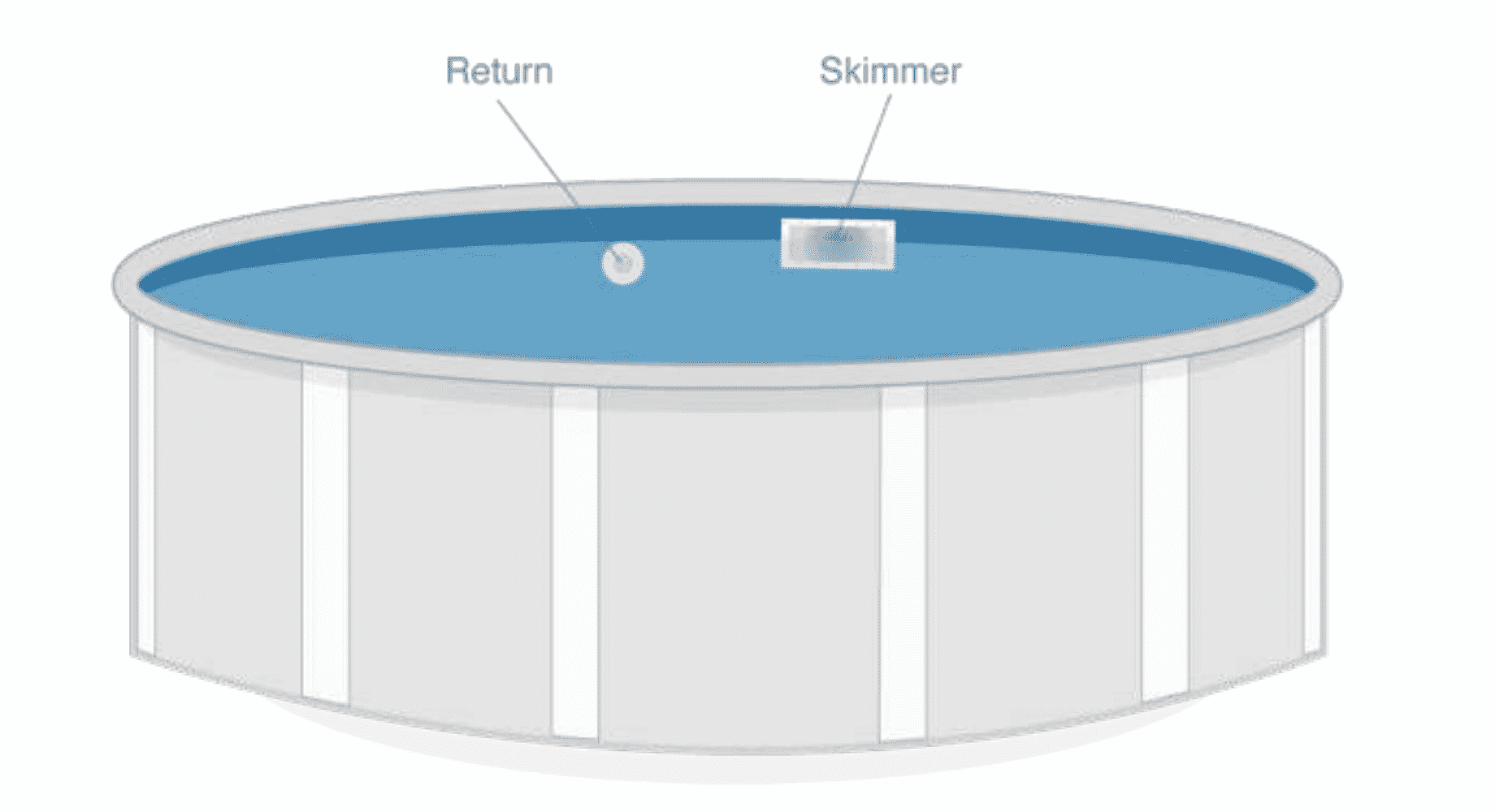
Additional Equipment
Got a little extra cash to spend? Want to make your pool care even easier, and your pool even more enjoyable? You can add a couple of bonus pieces of equipment to the lineup.
Pool Heater
No, it’s not one of the essential parts of a swimming pool. It doesn’t contribute to circulation or filtration. What it does do is make your pool more comfortable, and possibly even lengthen your pool season.
Pool heaters are available for both inground and above ground pools, and you have a wide variety of heating methods to choose from: natural gas, propane, electric, and even solar. And they work more efficiently with a solar pool cover.
If you’re not a fan of cold pool water, or you just want to swim later into the year, consider heating up your pool. Check out our complete guide to buying the best pool heater.
This heater is super reliable and long-lasting. The cupro nickel heat exchanger protects against corrosion caused by unbalanced water chemistry. And it provides major energy savings with low NOx emissions to meet air quality standards.
Chemical Feeder
This handy little piece of equipment makes sanitizing your pool super easy. You’ll just fill it up with whatever type of sanitizer the feeder is made to use—chlorine, bromine, or a mineral cartridge—hook it up, and then not have to worry about adding sanitizer for a while.
This is the last piece of equipment in your filtration line. The order of equipment is as follows:
Important: If you use both a pool heater and a chemical feeder, make sure you place them in the correct order when connecting them to your filtration system. Water should flow through them in this order:
- Pump
- Filter
- Heater
- Chemical Feeder
If you place the chemical feeder before the heater, the chemical-laden water can damage the heater over time.
This automatic chlorinator is perfect for the pool owner who hates fussing with chlorine tablets. With its dial control valve, you can easily adjust the chlorine level depending on your pool's size.
The Eighth Essential Part
Skimmers, main drains, suction lines, pump, filter, return lines, return jets … what else is there? That’s a silly question. It’s the most essential part of all—YOU! All of those other parts of a pool don’t matter if you’re not enjoying your pool.
Put the studying aside for a little while. Take a refreshing dip, relax while you float on your back, and then have a good game of Marco Polo. You can always get back to building your pool knowledge tomorrow.
Happy Swimming!
3 Ways We Can Help With Your Pool
- Pool Care Cheat Sheets (Free): Easy-to-use downloadable guides to help you keep track of taking care of your pool this year.
- The Pool Care Handbook: An illustrated guide to DIY pool care, including water chemistry, maintenance, troubleshooting, and more.
- The Pool Care Video Course: You’ll get 30+ step-by-step videos and a downloadable guide with everything you need to know about pool maintenance.

